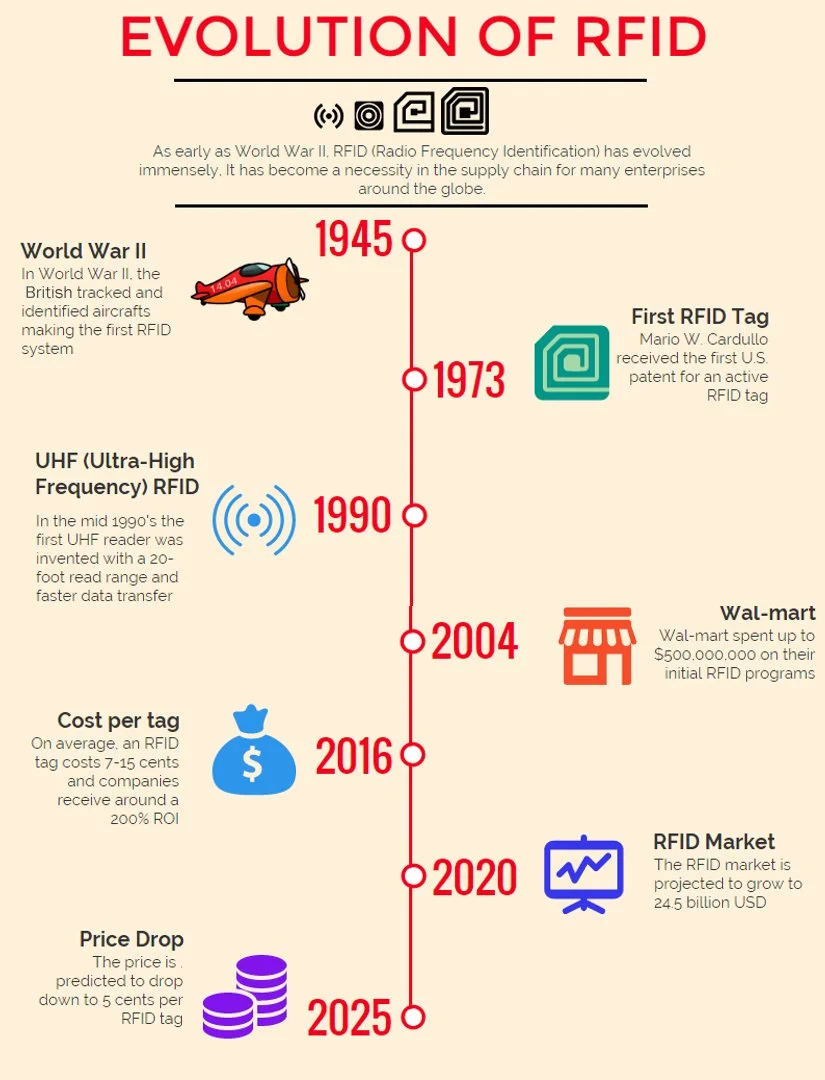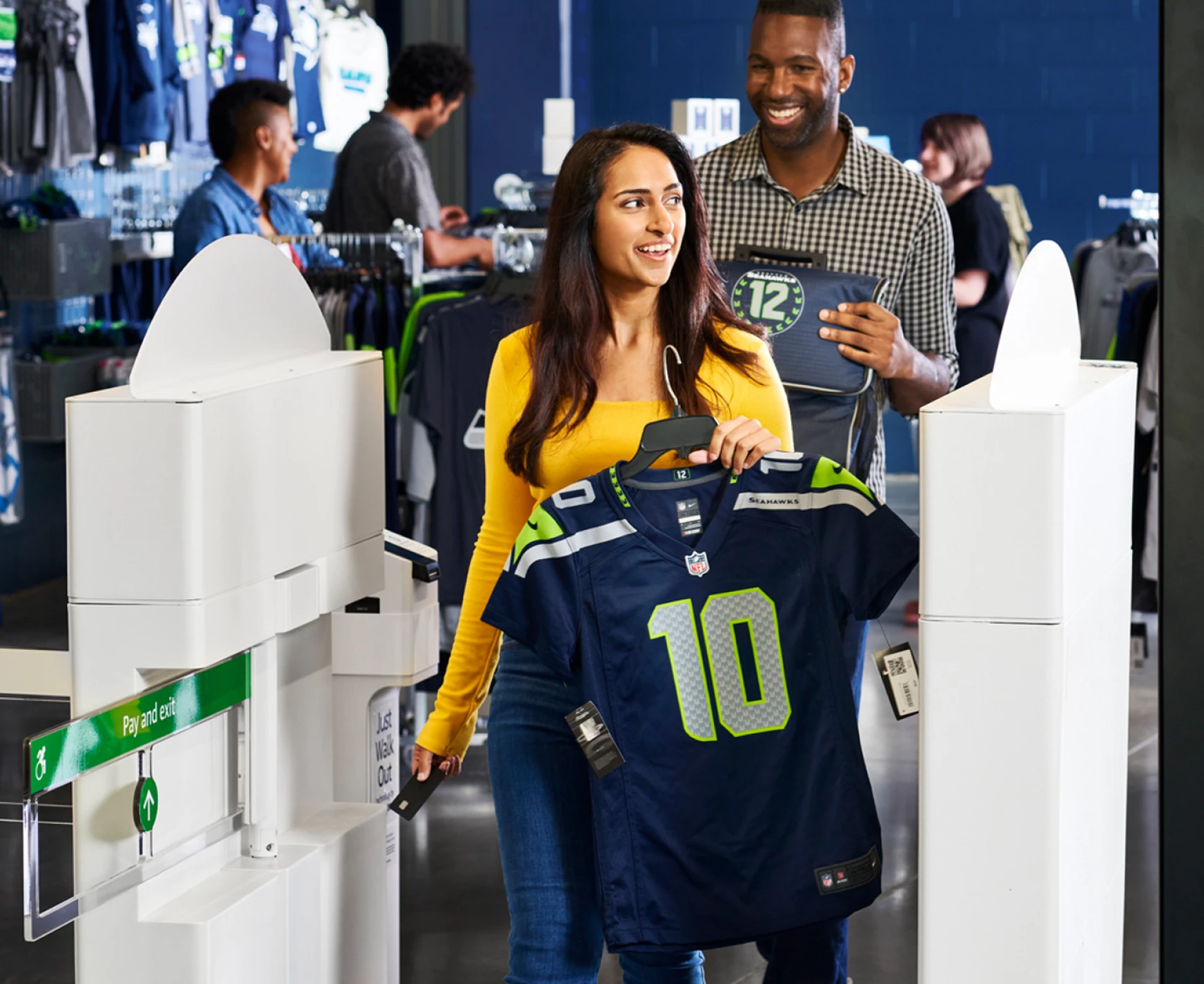RFID in Revolutionizing Asset Tracking Across Industries
A recent article highlighting the 25 Technologies that have changed the world lists the usual blockbuster inventions, such as the Apple iPhone, Wi-Fi, AI, facial recognition, drones, DNA testing, social platforms, quantum computing and bitcoin. However, not all of these world-changing technologies are so famous.
Who knew that Radio Frequency Identification (RFID) is a world-changing technology?
RFID is now a key technology across a growing number of industries. RFID uses electromagnetic fields to automatically identify and track objects. This simple technology has just two components: RFID tags (transponders) and RFID readers. The tags contain data, which are accessed by the reader via radio waves. Unlike barcodes, RFID tags do not require line-of-sight to be scanned, making them more versatile and efficient for asset tracking.
The read range of an RFID tag refers to the distance from which the tag can be detected by the RFID reader. There are two basic types of RFID tags – Passive and active. Passive tags do not require batteries and get their power from the electromagnetic waves of the RFID reader.
Read how Amazon is using RFID for its new Just Walk Out technology where customers can grab clothes, hats, shoes, and more—and simply walk out of the store through an exit gate (even while wearing their purchases) by tapping their credit or debit card, or hovering their palm over an Amazon One palm recognition device. No more checkout lines for clothes!
RFID systems are simple, adaptable, and easily connect with a range of hardware and software. That’s why RFID is a world-changing technology.
Read the article from the National Institutes of Health entitled “Radio Frequency Identification (RFID) in health care: where are we? A scoping review”
Read an article by Atlas RFID store about the many ways that RFID is used to identify and manage wine, beer, and spirits.
RFID is being used to identify, verify and connect to utilities - from buried gas lines to fiber to hydrants. Learn more.
Retail
Now that self-checkout is everywhere, we all understand the frustration of scanning bar codes. Fortunately, many retailers are moving to RFID-enabled shopping carts and baskets to improve the customer experience. Instead of struggling to find a code and scan it, the customer just drops the item in the cart/basket, and it’s scanned. Additionally, RFID-enabled shelves can provide in-depth information on any product via the NFC capability on most cell phones.[1]Logistics
Cargo tracking is essential in the logistics industry. Because RFID tags are available in many forms, they can be affixed to nearly everything, from individual packages to shipping containers, vehicles, train cars and so on. Shipments can be tracked in real-time from origin to destination from a distance. Any interruptions can be quickly detected and resolved, saving time and money.Healthcare
If you’ve been in a hospital, it’s hard to miss the medical equipment wheeled into every available space. Hospitals are continually challenged to efficiently use this equipment, not only because of cost, but also because of regulatory requirements. RFID is making a huge difference in keeping track of every device, as well as it’s maintenance history and what specific device has been used on each patient. In many facilities today, patient wrist bands are also RFID-enabled to ensure the patient is accurately tracked as they move through the treatment process.Manufacturing
Tracking inventory parts and manufactured assemblies has always been a challenge in manufacturing. Bar codes were initially used to address the issue, but the requirement for a line of sight reduces efficiency. RFID delivers efficient inventory tracking without visible markers, enabling product monitoring throughout the manufacturing process.Hospitality
Years ago, hotels replaced locks and keys with RFID-enabled cards. Today, the use of RFID is not limited to access control – now, RFID is used for inventory control as well. RFID tags on hotel and restaurant supplies provide inventory control, while tags on amenities such as hair dryers, robes, and so on, help prevent loss.Agriculture
RFID tags are used for tracking and monitoring livestock as well as for monitoring wildlife.
RFID tags on livestock have become commonplace. Tags are placed on animals soon after birth, tracking their passage from farm to stockyard to supermarket. Besides providing food traceability that is so important for health, RFID helps to manage disease within herds. RFID helps to collect data on individual animals’ behavior and health. That means that outbreaks can be quickly detected and treated as they occur.
In wildlife research, RFID tags are placed on managed endangered species populations, migratory birds, or large mammals. These tags enable researchers to identify individual animals, track their movements, and collect a broad range of data.In both livestock farming and wildlife conservation, asset tracking helps prevent theft and poaching. RFID tags can trigger alarms if an animal leaves a designated area or if an unauthorized person attempts to move an animal.[2]
Museums
Recent headlines highlighting the loss of irreplaceable items at prominent museums highlight the challenge curators face as they must receive, catalogue, store, and display millions of artifacts. A new study showed how RFID can help paleontologists keep track of dinosaur bones from dig to display.RFID can help the visitor experience. When issued an RFID-enabled badge, an audio presentation will be triggered by the proximity to the displayed artwork, providing a wealth of information about the work, it’s creator and history. The data generated from each visitor’s visit can be analyzed to gain insight into visitor traffic patterns, exhibit popularity and even the impact of different lighting and environmental conditions over time. This helps the curator better manage the museum.In art museums, priceless works can be tagged with a discreet RFID label that will trigger alarms if the piece is moved without authorization.
Wine
RFID technology helps vineyards maintain accurate inventory information for real-time tracking of product movements, minimizing the risk of over- or under-stock. RFID tags can monitor temperature and humidity throughout the supply chain to maintain product quality and safety. At the retail location, Point of Sale Inventory Replenishment can automatically update the inventory, ensuring that customers can always get their favorite vintage.Infrastructure
RFID is particularly suited to the management of any type of infrastructure asset, from utility poles to buried valves. A simple RFID tag delivers the location, identity and owner of any asset anywhere. If used widely, RFID would enable cities, airports and utilities to better manage excavation and construction by providing on-site verification of any type of buried asset. The cost of unintentional utility strikes costs the U.S. more than $30 billion annually, according to the Common Ground Alliance. This expense is an unnecessary burden on economic development with no upside.
The RFID market is growing rapidly
The global RFID market is expected to grow from USD 15.8 billion in 2023 to USD 40.9 billion in 2032 at a CAGR of 11.1% during this time. As more and more industries leverage the power of RFID, the applications of RFID will expand. The convergence of RFID, IoT, Artificial Intelligence and Machine Learning will deliver transformative technologies to all sectors, making sense of data and providing a new depth and breadth of understanding.
Berntsen is here to help customers take advantage of this technology with its InfraMarker RFID solution. InfraMarker combines the power of GIS with RFID to deliver accurate, verified asset identification any time and anywhere. See how InfraMarker can change your world.





